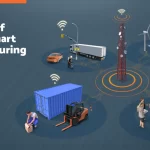How the future of work will impact DAS providers for the better
It is without a shadow of a doubt that disruptive innovations are birthing new sectors, business models, income options while shattering those of the pre-pandemic era.
People are now communicating, collaborating, and working through an array of new digital channels that enables them to work longer and more efficiently while regaining control of their lives. This has caused a generational collision that brings new dimensions to the state of work.
Companies that previously required ample office space to house their workforce are slowly regressing as digital empires rise and fall within cyberspace. This prompted the global workforce to take a hard look at their professional selves and wonder if they could take back control of their time.
This phenomenon birthed three different approaches to how companies should move forward as we enter a COVID endemic:
- Returning to the office
- A complete work from home (WFH) model
- A hybrid model
Of course, each industry is experimenting with approaches that best suit them, with employees leading the way to how they look at their careers and the direction they want to take them.
A recent survey conducted by Global Workplace Analytics found that 68 percent of employees worldwide said that they are very successful working from home.
Indeed, the digital tools at our disposal empowered us to get the job done from home, with occasional visits to the office being greeted to encourage in-person collaborations. The leniency on WFH business models has, naturally, caused a data explosion that puts pressure on Internet Service Providers (ISP) to deliver uninterrupted and fast broadband speeds while putting them at the heart of the workforce revolution.
Now more than ever, the telecoms industry has become more critical to the livelihood of both companies and their employees. This shone the limelight on both ISPs and distributed antenna systems (DAS) providers to increase their inclination toward more innovative and disruptive products and services that continue the flow of data and information at all times.
Due to this, investments have poured into the sector for many reasons. Among them is an emphasis on rejuvenating the worldwide digital infrastructure that meets the requirements of a more digitally inclined future.
In the U.S. alone, President Joe Biden pushed a new bipartisan infrastructure bill that will look to level up the country’s digital efforts to meet international standards.
One of the main parts of the bill focuses on upgrading current network and broadband operations on a wide scale.
“Broadband Internet is necessary for Americans to do their jobs, to participate equally in school learning, health care, and to stay connected. Yet, by one definition, more than 30 million Americans live in areas where there is no broadband infrastructure that provides minimally acceptable speeds – a particular problem in rural communities throughout the country,” a whitepaper published by the White House regarding the state of broadband in the U.S.
According to the latest OECD data, among 35 countries studied, the United States has the second-highest broadband costs. The new legislation will pump $65 billion to spread reliable and high-speed Internet through “a historic investment in broadband infrastructure deployment.”
This spells great news for DAS providers who are witnessing a significant hike in the industry for the next decade, significantly as the state of work slowly shifts away from offices to homes. This will translate into an increased need for structures to follow a telecoms-by-design aspect to their constructions.
DAS and telecom providers look to be at the forefront of the digital revolution, as they lead the line for humanity to become more connected in a much more seamless and optimized manner.
Peer Communications can help build with their Internet and telecommunications capabilities from all structural aspects. Want to learn more about how we can help you? Reach out to us for a consultation.





